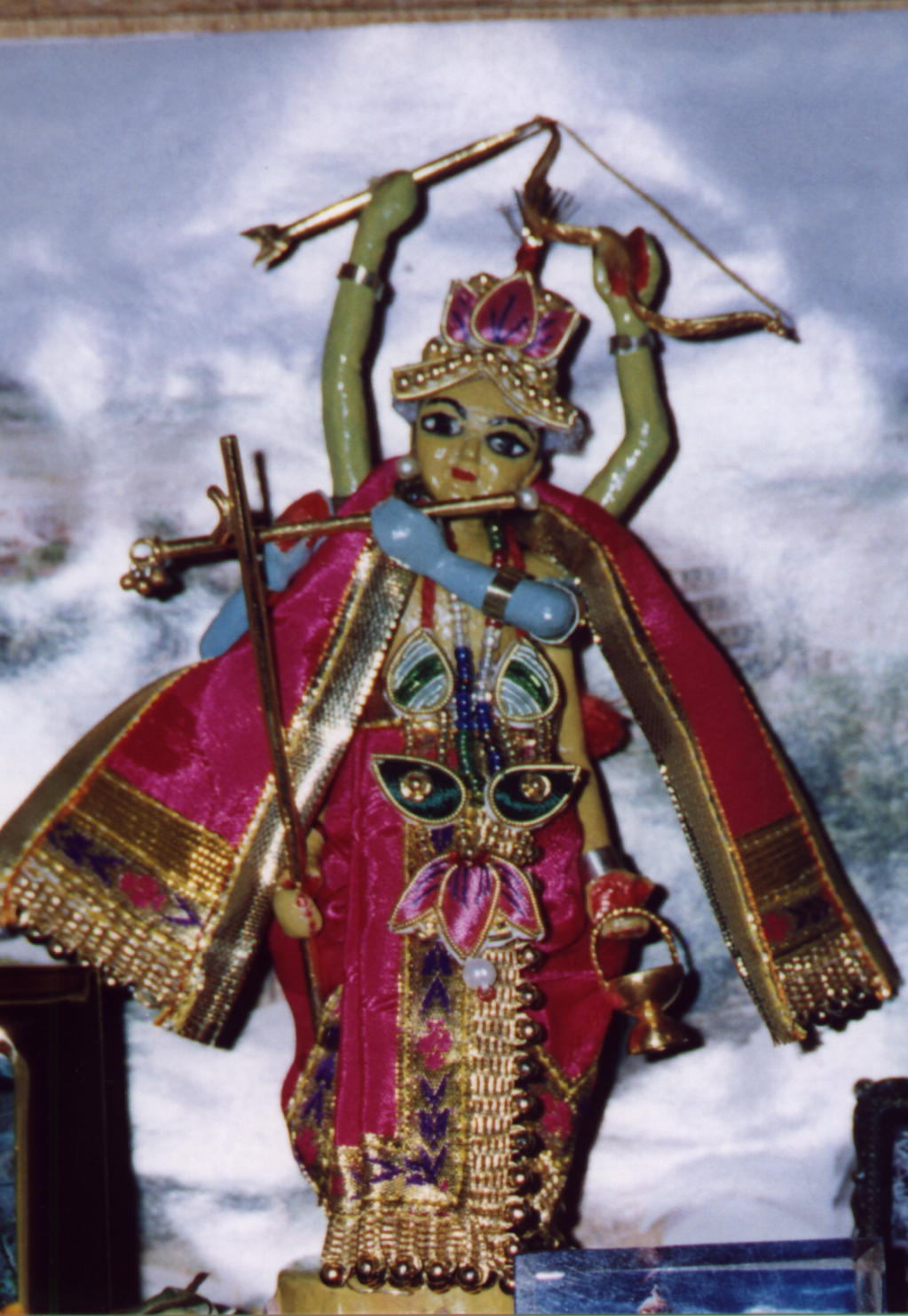ISKCON Member Opens Council Meeting With Sanskrit Verse
By Antony Brennan on 25 Apr 2009
Nityananda Chandra Dasa is a devotee of Krishna and pujari at Sri Sri Radha Kalachandij’s in Dallas, Texas.
On Wednesday, April 8th, he represented ISKCON when he gave the morning invocation at the Dallas City Hall council meeting. The invocation is a prayer given to open the council meeting and ask for the Lord's blessings.
Previously the invocation for the Dallas council meeting had been given by Dallas temple president Nityananda Dasa and Tamal Krishna Goswami.
“I got a call from the secretary of the mayor who asked if we had a priest who could do the invocation prayer at City Hall,” says Nityananda Chandra. “She said it would be on either April 1st or 8th. I didn't think it was a jok,e but April fool's day is on the first.”
Luckily it was no joke and he would be able to bring a little Krishna consciousness to the Dallas council. He would also take the opportunity to preach an important message and to recite the Maha Mantra for all those present to hear and for the television cameras to capture.
“I spoke to our temple president and he told me that I should go and give the invocation,” Nityananda Chandra says. “He said that it is important for them to see some new young faces.” Amanda, the secretary of the mayor, contacted me by email and gave me some guidelines.”
When Nityananda arrived at the council chambers he was surprised to discover that he had met Amanda before. For a college project Amanda, like many others, had visited the temple and he had been the tour guide.
Sri Sri Radha Kalachandis hosts over 1000 students every year who come for a school project. “Amanda said that she would arrange a meeting with me and the Mayor, some time in the near future, so that I can personally invite him to the temple and gift him a Bhagavad Gita,” Nityananda says.
How did you think of what to say in an invocation? “Temple president suggested that I structure the prayer.” Nityananda Chandra says. “The first part should be a glorification, the second should be my disqualification, the third my petition, and fourth the prayed benediction.,” he says. “All this should be followed by a verse of the Bhagavad Gita”.
“I really wanted to share some key points” says Nityananda. “Such as the difference between body and soul, that God has many names, the inequality of bodily consciousness and that Krishna is our dearest friend.” Nityananda chose to use Bhagavad Gita verse 2.65. “I specifically choose this verse as it proclaims that if we get God mercy, we get refined intelligence.”
“The mayor was a nice gentleman,” Nityananda says. “We spoke briefly before the council meeting started.” and did not get to speak after because I left at the beginning of the 5 hour meeting. “Initially I wasn’t nervous, but walking from the private passage of his office to the meeting hall and coming around the corner I noticed there were four hundred of people sitting in the audience and a camera crew from each of Dallas' four different TV stations.”
The council meeting is broadcast on live TV. “Everyone seemed to be happy about it,” Nityananda says. “Afterward I sent some cake to the mayor and I plan to invite him and his family to a press free dinner at Kalachandiji’s .”
from ISKCON News.com



